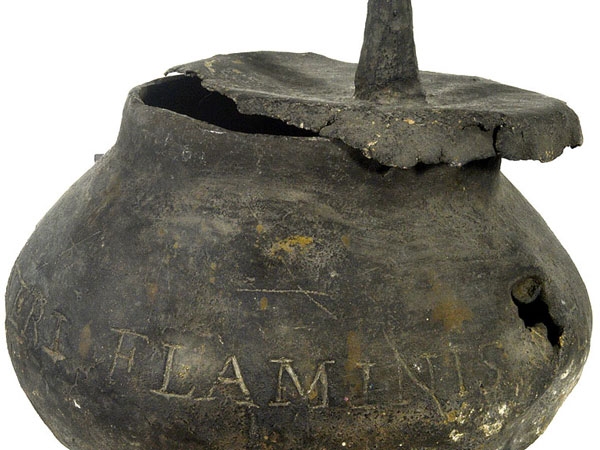For me, a day without a hoax is like Gruyère cheese without holes. Francis Blanche
1724, Lyon. While working in his field, a farmer finds a small lead urn. It doesn't look particularly exceptional, but perhaps it might interest antique collectors. The farmer takes it to Father du Pineau, a cleric from Lyon. He buys it immediately! But not for the reason you might think.
Du Pineau decides to play a trick on his big enemy, Father Colonia, a Jesuit priest who pretends to know all about antiquities. To do this, the cleric becomes a forger. Imitating the ancient technique, he engraves an inscription on the urn.
The words chosen by du Pineau make it seem as if the urn contains the ashes of an illustrious figure from Antiquity. To round out the joke, he fills the urn with bits of bone, antique coins and ashes from his fireplace.
Through an intermediary, Father du Pineau proposes the item to the Jesuit priest to add to his collection. Colonia doesn't suspect a thing! He thinks he has found an archaeological treasure and announces it to everyone. But the fraud is soon discovered. Feeling ridiculous and angry at being tricked, he leaves the urn in a corner. It's not mentioned again for a very long time.
In the year 2000, it turns up in a flea market. Contemporary specialists have no trouble identifying that the inscription is more recent than the recipient. Nevertheless, the urn becomes part of the collections of the Roman Museum of Lyon as an example of falsification practices. In the end, Father du Pineau actually did succeed in making a work that's worthy of a museum!
By Artips


